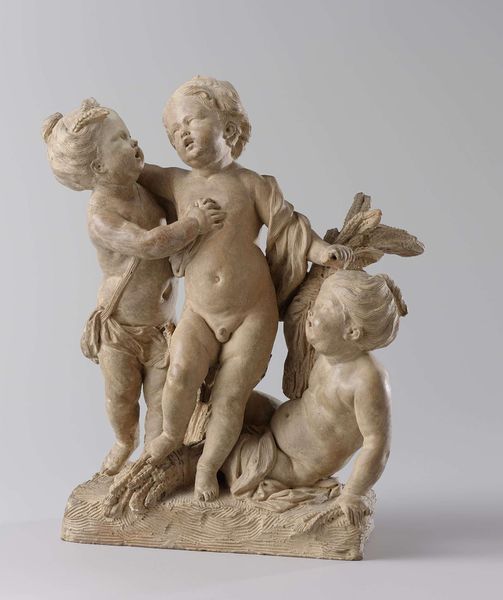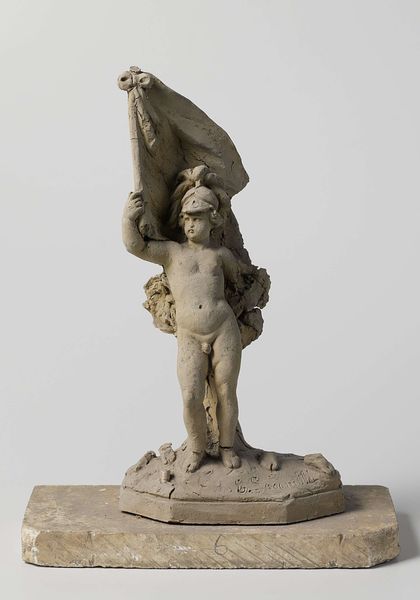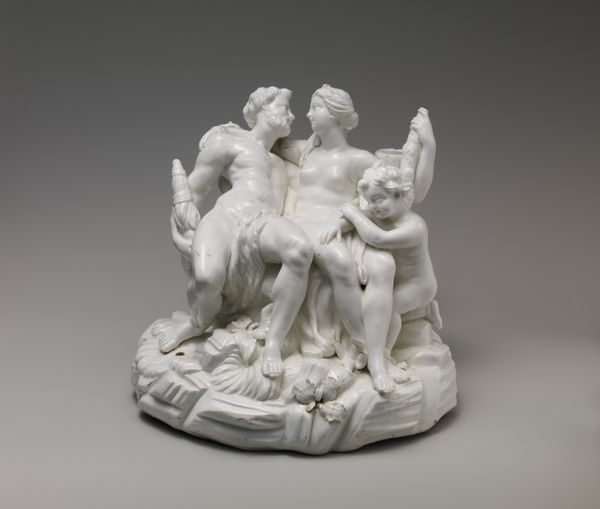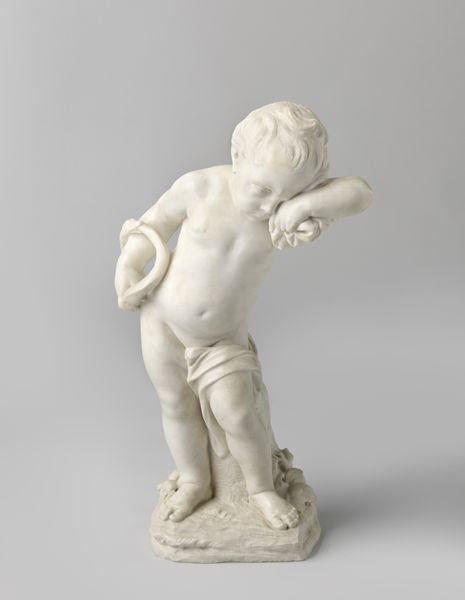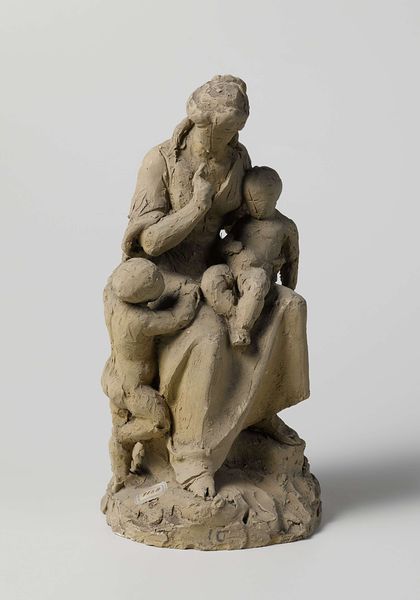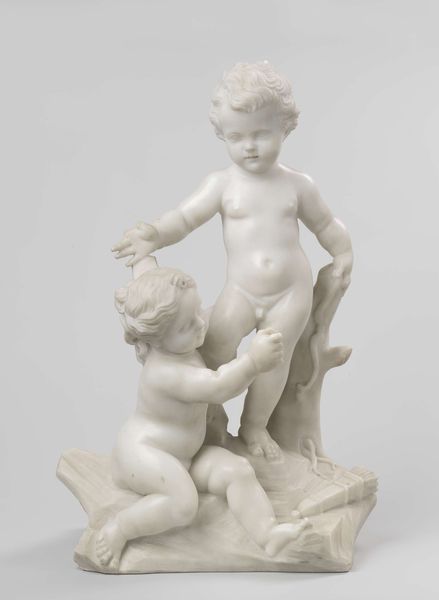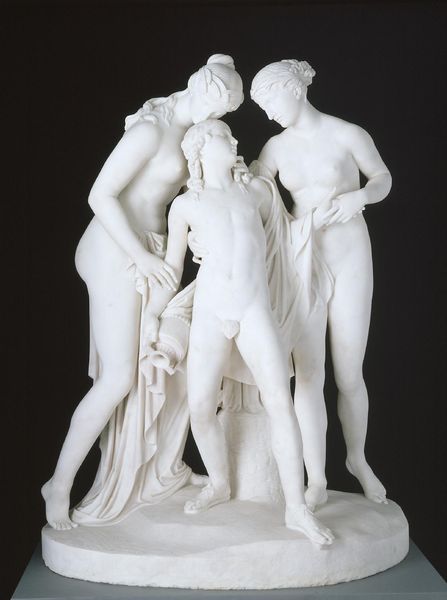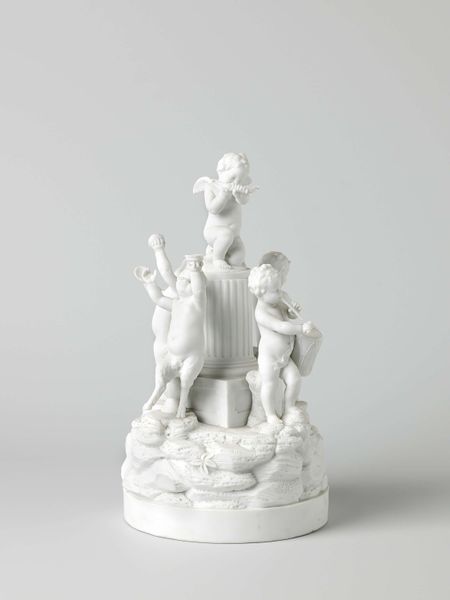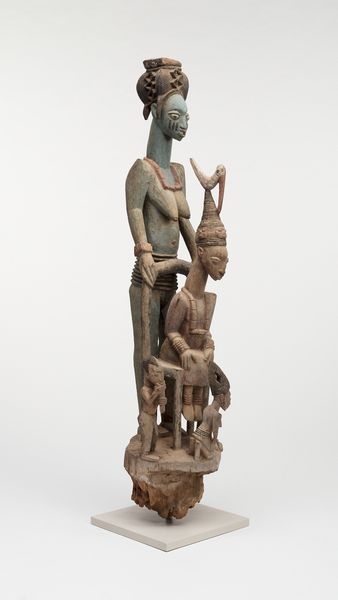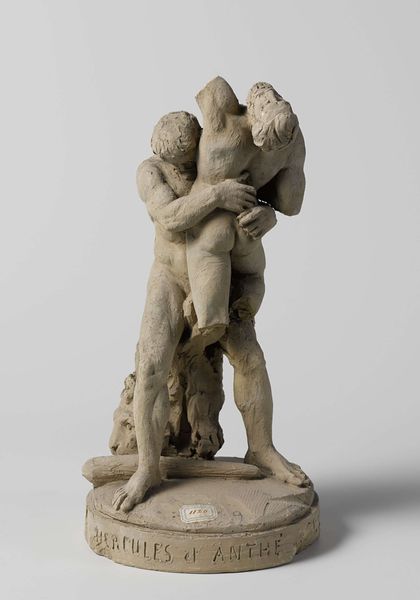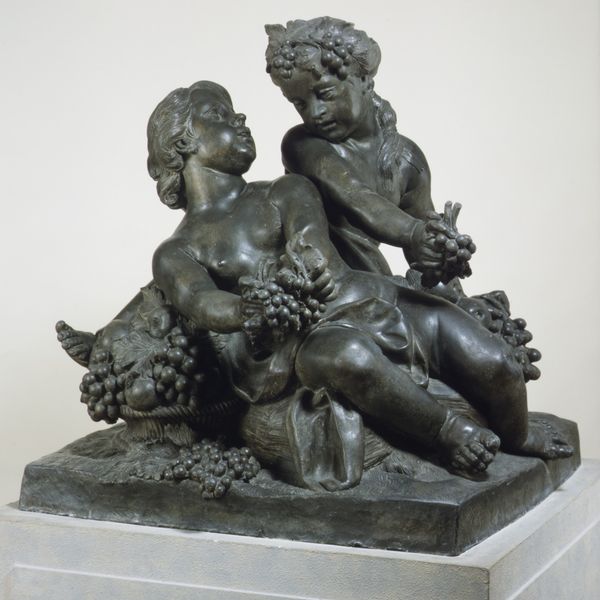
metal, bronze, sculpture
#
allegory
#
neoclassicism
#
metal
#
sculpture
#
bronze
#
figuration
#
sculpture
#
academic-art
Dimensions: height 39 cm, width 17 cm, depth 11.5 cm
Copyright: Rijks Museum: Open Domain
Eugène Lacomblé created this sculpture, entitled 'Overwinning van de vlag,' or 'Victory of the Flag,' out of plaster. Here we see three putti, or cherubs, with one in the center wearing a lion's pelt and holding a flag, all symbols of victory. This work likely hails from the 19th century, a period when nationalistic fervor and military prowess were often glorified through art. The use of putti, a motif harking back to classical antiquity, adds a layer of idealization to the concept of victory, masking the harsh realities of war with notions of innocence and divine approval. The flag itself, though not explicitly identified with a particular nation, embodies the pride and territorial ambitions. As art historians, understanding this piece requires us to delve into the social and political climate of 19th-century Europe, examining the complex interplay between nationalism, imperialism, and artistic expression. This necessitates consulting a variety of resources, from historical archives to critical analyses of the period's artistic trends.
Comments
No comments
Be the first to comment and join the conversation on the ultimate creative platform.
